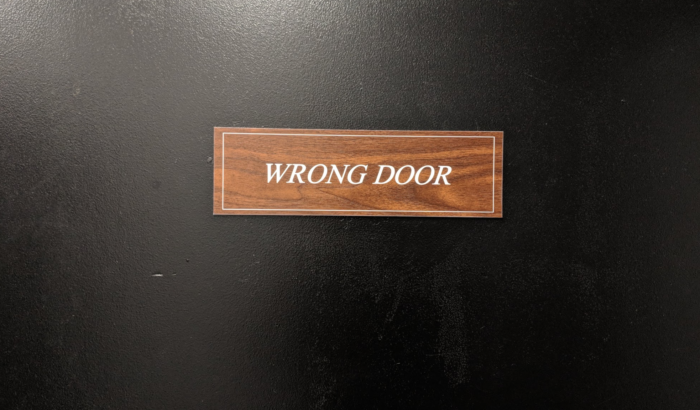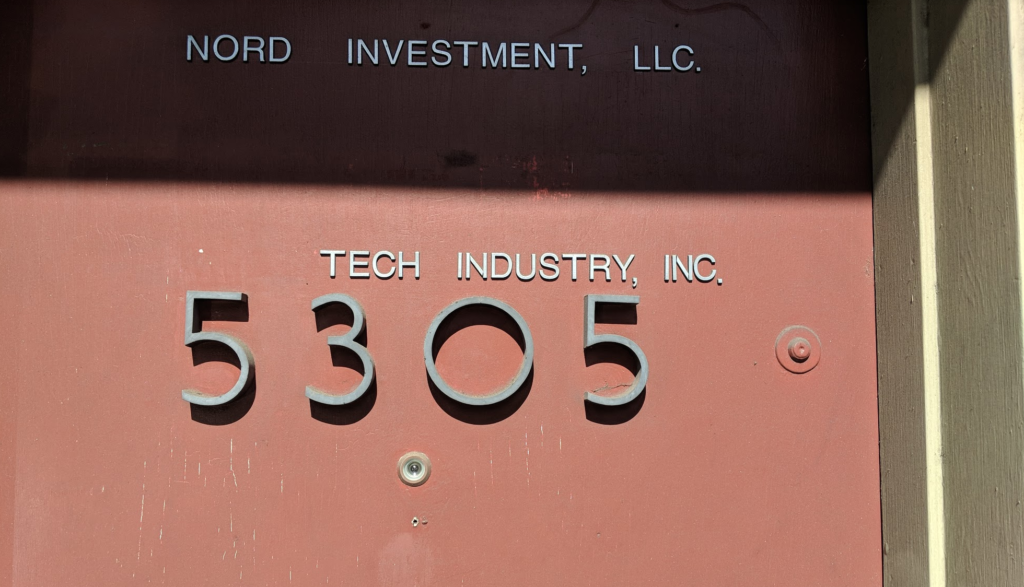Renaming, like naming but harder
At A Hundred Monkeys we do our fair share of renaming projects. This year, 42% of our naming projects have been finding new names for products or companies that already have publicized names. Not only is renaming somewhat common, it happens for different reasons. Some companies are legally forced to change their names while others want to signal a shift in audience, product, or strategy. Renaming can be a big opportunity even though most clients understandably view it like organizing their basements. Change is difficult — especially when you have grown attached to the thing you’re changing. This makes renaming projects more complex and difficult than your standard naming project.
So why are renaming projects harder? Let’s take a look at the three biggest reasons.

Familiarity bias
When you see a potential new name for the first time it can feel foreign and naked: foreign because you’re seeing a new label for something you’re quite familiar with, and naked because it lacks all the associations and visual support of your existing name. You’re essentially comparing a word on a page to a living brand that you’ve spent months or years building and cultivating. This comes down to familiarity bias (sometimes called the Mere-exposure effect).
Some of the earliest research on familiarity bias was actually done with words and characters. “In the 1960s, a series of Robert Zajonc‘s laboratory experiments demonstrated that simply exposing subjects to a familiar stimulus led them to rate it more positively than other, similar stimuli that had not been presented before. At first, Zajonc looked at language and the frequency of words used. He found that overall positive words were used more than their negative counterparts. Later, he showed similar results for a variety of stimuli, such as polygons, drawings, photographs of expressions, nonsense words, and idiographs, judging by a variety of procedures, such as liking, pleasantness, and forced-choice measures.”
When you’re naming something new, there’s excitement around the idea of putting a name to something for the first time. When you’re renaming, familiarity bias is a force to be reckoned with. We have even seen this show up in code naming where projects will have an internal code name that was never meant to be market-facing. After seeing a round of potential new names, the code name feels warm and familiar by comparison. Having an iterative process can dampen the bias a bit but we’re continuously experimenting with other ways to help clients see new names in a more familiar light.
As an aside here, we’ve also seen familiarity bias manifest in the form of clients wanting a new name that’s “like their old name.” Nothing is as unexciting for us as coming up with a Lite version of a soon to be dead name.
Not ready to say goodbye
Cue Andrea Boccelli. Renaming is always easier when it’s mandatory (i.e. lawyers already involved). The finality–and imminent legal action–give the renaming process a sense of purpose. You know a change is afoot, now it’s just a matter of what your new name is going to be. When the renaming isn’t mandatory, maybe it’s just an exploration to see if a better option can be found, success rates drop significantly. It’s really hard to find a new name you’re excited about when you have a name you’re familiar with (see above) in your back pocket. This always reminds me of the people who stay in a relationship that isn’t really working for them because the thought of dating again and starting over is too daunting. If you’re committed to finding something better, you need to take the leap and leave your past behind.

Brand equity
Renaming surfaces a lot of brand equity considerations, particularly for those who have been using their old name for a while. Renaming sets off a series of dominoes where everything from visuals to websites to uniforms to signage needs to change. We’ve worked on projects where the cost of updating signage alone has reached well into hundreds of thousands of dollars. This is understandably daunting. There are questions about how to tell customers or clients and how to make sure people end up in the right place without getting confused or fed up. There are also the situations where a vocal minority decides they love the old, tired, brand right when a new brand appears (see Tropicana, Gap, Airbnb). Transferring brand equity is more about education than craft. There isn’t a needle-threading name that alleviates all brand equity concerns. Clients and customers understandably want to know why the change is occurring. Tell them. Be clear and patient. And remember, the type of person who gets angry on the internet about a name change will be over it (and angry about something else) within 72 hours. Count on it.
Renaming is difficult because names should theoretically last the life of your business. When they don’t, for whatever reason, there’s some cognitive dissonance to overcome. Hopefully understanding where that cognitive dissonance comes from helps to alleviate it.

